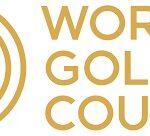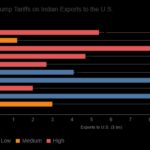India’s relative advantage over rival Asian exporters in the US market has eroded sharply after Washington’s latest tariff measures, curbing the upside once expected from April’s China+1 supply chain shift, India Ratings and Research (Ind-Ra) said on August 6, 2025.
The ratings agency said tariff differentials with China are now smaller than in April, limiting gains for sectors such as textiles and chemicals. The final US tariff list for China, expected in the coming days, and measures to prevent re-routing via South Asia will determine the ultimate competitive impact. Narrower gaps could also reduce risks of excess Chinese capacity spilling into India’s steel, chemical and petrochemical markets.
“Indian corporates with significant exposure to the US will have to either re-orient to new markets or absorb some tariff increases in the short term to sustain volumes,” said Rakesh Valecha, senior director at Ind-Ra, citing stronger positions held by Vietnam, Indonesia, Thailand and Bangladesh. Large companies can adapt more easily, but small- and mid-sized exporters with thin liquidity remain vulnerable.
GDP shielded, company-level pain ahead
Ind-Ra expects limited direct GDP impact given India’s diversified export basket and relatively small US share in its economy, trimming its FY26 growth forecast to 6.3 percent from 6.6 percent. The US is a top destination for Indian goods, but India buys little from America, creating an asymmetric trade relationship. Even if the present 25 percent reciprocal tariff (effective 21 percent) is revised lower, Ind-Ra said the country may not regain its earlier lead over South Asian peers.
Pharmaceuticals and electrical equipment, India’s two largest US-bound export categories, remain tariff-exempt under the Section 232 review. Any reversal would squeeze margins in generic drugs – where EBITDA typically runs 5–20 percent – and slow demand in the short term, though most producers could pass on costs over time.
Investment, capex sentiment under pressure
The loss of tariff advantage could weigh on foreign direct investment and export-oriented capital expenditure, Ind-Ra warned. Higher tariffs may blunt India’s labor and cost advantages, prompting some firms to delay expansion or relocate capacity to lower-tariff jurisdictions.
Investment is expected to continue in domestic-focused sectors, but export-oriented “new age” industries may wait for clarity. The government may need to extend Production Linked Incentive schemes if tariffs persist, the agency said.
Commodity backdrop supportive but oil risk looms
Slowing global demand and Chinese overcapacity should keep commodity prices benign, aiding profitability. Risks of dumping into India have eased, but a loss of discounted Russian oil – roughly 30 percent of India’s crude imports – could lift costs, especially if replaced with US supplies.
Sector strains, small exporters exposed
Textiles, some chemical segments, and gems and jewelry could see their US edge diluted. The latter faces an already weak demand backdrop, while auto components are also at risk given the US market’s importance. Passenger vehicles and two-wheelers are less exposed.
Ind-Ra cautioned that tariff-driven pressures may deepen credit strain for small exporters. Bank exposure to them is modest, but non-banks with concentrated small business lending could face elevated risk. Despite ample liquidity and policy rate cuts, credit access for lower-rated firms will remain tight due to cautious underwriting, said Soumyajit Niyogi, Ind-Ra director.


![image002[1]](https://southasianherald.com/wp-content/uploads/2025/08/image0021.jpg)



